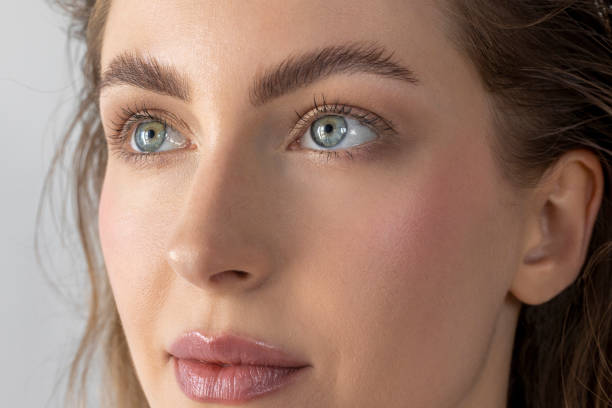Rhinoplasty, often referred to as a “nose job,” is a popular cosmetic procedure aimed at enhancing facial harmony and correcting nasal imperfections. As with any surgical intervention, understanding the recovery timeline is essential for setting realistic expectations and planning post-operative care. Patients seeking Rhinoplasty in Abu Dhabi are often eager to know how long the recovery process will take to resume their daily routines comfortably.
This comprehensive guide provides detailed insights into the typical recovery duration, stages of healing, and essential tips to facilitate a smooth recuperation. Whether you are considering rhinoplasty or have already undergone the procedure, knowing what to expect can help you navigate the recovery phase effectively.
Understanding the Recovery Timeline for Rhinoplasty
The recovery period after rhinoplasty varies depending on individual factors such as age, overall health, and the extent of the procedure. Generally, patients can expect a gradual healing process that spans several weeks to months.
Initial Healing Phase (First Week)
The first week post-surgery is characterized by significant swelling, bruising, and discomfort. During this period, patients usually wear a nasal splint to support the new nasal structure and protect it from accidental bumps. Swelling and bruising around the eyes and nose are most prominent during these initial days but tend to subside considerably by the end of the week.
Patients are typically advised to rest and avoid strenuous activities. Pain management, along with proper wound care, plays a crucial role in ensuring comfort and preventing complications. Most patients can return to light activities and work within 7 to 10 days, although some swelling may persist.
Reduction in Swelling and Bruising (Weeks 2-4)
As the body begins to heal, noticeable improvements occur. Swelling and bruising gradually diminish, and patients often see their new nasal shape becoming more apparent. During this phase, patients are encouraged to follow their surgeon’s guidelines on activity restrictions and nasal care.
While most external signs improve, internal swelling may continue for several weeks. Patients should avoid any trauma or pressure to the nose during this period. Light exercises can usually be resumed after about two weeks, but high-impact sports or strenuous activities should be avoided until fully healed.
Long-Term Healing and Final Results (Months 3-12)
Complete healing of the nasal tissues can take up to a year, especially for more extensive procedures. The nose may appear swollen or asymmetrical temporarily as the tissues settle. Over time, residual swelling subsides completely, revealing the refined shape achieved through surgery.
It’s important to note that subtle changes and improvements can occur even after several months. Patience is vital during this stage to appreciate the final outcome fully.
Factors Influencing the Duration of Rhinoplasty Recovery
Several individual factors can influence how long recovery takes. Understanding these factors helps set personalized expectations.
Extent of the Surgery
The complexity of the rhinoplasty procedure directly impacts recovery time. Minor corrections may have a shorter recovery period, while more extensive reshaping or structural modifications may require a longer healing phase.
Patient’s Age and Overall Health
Younger, healthier patients tend to heal faster due to better tissue regeneration and immune response. Conversely, individuals with pre-existing conditions or compromised immune systems may experience longer recovery durations.
Post-Operative Care and Compliance
Adherence to post-surgical instructions significantly affects healing. Proper wound care, avoiding smoking, and following activity restrictions promote quicker recovery and minimize complications.
Skin Thickness and Nasal Structure
Thicker skin or more complex nasal anatomy can influence swelling duration and the time needed for final results to manifest.
Tips for a Smooth and Effective Recovery
Optimizing your recovery process involves a combination of proper care, patience, and lifestyle adjustments. Here are key tips to facilitate healing after rhinoplasty:
Follow Post-Operative Instructions Carefully
Strictly adhere to your surgeon’s guidance regarding wound care, medication, and activity restrictions. This minimizes the risk of complications and speeds up healing.
Keep the Head Elevated
Sleeping with your head elevated helps reduce swelling and facilitates drainage. Using extra pillows or a recliner can make a significant difference.
Avoid Physical Strain and Impact
Refrain from vigorous activities, heavy lifting, or sports that could jeopardize the nasal structure. Protecting the nose from accidental bumps is crucial during the early recovery phase.
Maintain Proper Hygiene
Gentle cleansing of the nasal area and avoiding excessive touching or blowing can prevent infections and promote healing.
Stay Hydrated and Maintain a Healthy Diet
Proper nutrition supports tissue repair and boosts immune function. Include plenty of fluids, fruits, vegetables, and protein-rich foods.
Attend Follow-Up Appointments
Regular check-ups with your surgeon allow for monitoring healing progress and addressing any concerns promptly.
When Can You Resume Normal Activities?
Most patients find that they can return to work or light daily routines within a week or two, provided they avoid strenuous activities. Full recovery, including the resolution of swelling and the stabilization of nasal tissues, can take from several months up to a year.
Patience during this period is essential, as the final results unfold gradually with ongoing healing.
Recognizing the Signs of Proper Healing
While each individual heals differently, some common indicators of a healthy recovery include:
- Reduction in swelling and bruising over time
- Gradual disappearance of nasal splint
- No persistent pain or abnormal discomfort
- Stable nasal shape without signs of infection or complications
If any unusual symptoms such as severe pain, persistent swelling, or signs of infection occur, consulting your surgeon promptly is advisable.
Conclusion
Understanding the recovery timeline for Rhinoplasty Surgery in Abu Dhabi or any location is vital for managing expectations and ensuring optimal results. The initial healing phase typically lasts about one week, with significant improvements seen within the first month. However, the complete healing process, including final aesthetic results, can extend over several months to a year.
Patience, proper care, and adherence to medical advice are essential components of a successful recovery. By following these guidelines and maintaining a positive outlook, patients can look forward to enjoying the transformative benefits of rhinoplasty with a smooth and satisfying healing journey.



